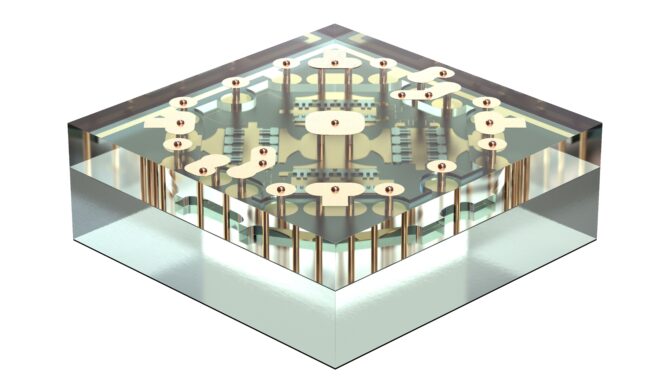
Making the switch
By Russ Garcia, CEO, Menlo Micro
Circuit Protection Electronics Environmental Editor Pick environmental MEMS-based menlo-micro switch switching think greenCan we manage the electrification of everything?
The recently passed Inflation Reduction Act represents the largest climate investment in U.S. history. As with any major piece of legislation, it has its share of critics. Politicians, pundits and experts will continue to argue over the specifics of climate action, but the fundamental goal has become clear—transitioning quickly from carbon fuels to more sustainable, climate-friendly ways of powering our lives.
While the ‘electrification of everything’ movement is a critical element of climate action, it presents some new challenges. Most of us have grown accustomed to cheap, reliable sources of energy, but recent events like the winter storm that shut down the grid in Texas and wildfires in California have made it clear that our nation’s electric grid is in poor shape.

Menlo Micro’s Ideal Switch technology accelerates the ‘Electrification of Everything’.
Removing carbon-based fuels from the equation will reduce greenhouse gas emissions, but electrification will also dramatically increase the load on the grid. Take electric vehicles (EVs), for example. Experts have concluded we’ve reached the EV tipping point, but mass adoption of EVs means America’s drivers will consume much more electricity. As we move steadily toward electrifying everything, from cars to kitchens, that load on the grid will grow rapidly.
Decarbonizing our energy sources is an extremely important step, but the ability to efficiently and economically transmit and distribute electric power is equally vital. An often-overlooked component of the electrification conversation is the need for reliable, low-power switch and relay technology that can enable the energy grid to sustain large-scale electrification.
Controlling the flow
An electric switch is like electricity itself—it’s something we use constantly but rarely think about. There are trillions of switches facilitating everyday life, from light switches in our homes and myriad electronic devices to huge relays managing the flow of electricity across state and regional power grids.
For most of the grid’s 120-year history, electric power only moved in one direction: from large power plants to homes, buildings, cities and factories. Today, with decentralized energy sources such as rooftop solar panels on the rise, the grid faces the challenge of managing the bi-directional flow of electricity. This means our grid must handle larger transmissions as well as more sophisticated distribution networks often over longer distances to reach far-flung solar and wind farm substations. Meeting this challenge will require better switching technology.
Making the switch
Today’s commonly used electromechanical relays (EMRs) stem from the circuit breaker invented by Thomas Edison in 1879. The next major innovation in switching technology didn’t come until the 1950s with the advent of solid-state or semiconductor switches. But both types of switching technologies have drawbacks. EMRs can handle high levels of power, but they are large, slow and unreliable over time. Solid-state switches are smaller, faster and more reliable, but they leak power and generate heat.
Given those drawbacks, technology innovators have been pushing to develop next-generation switches that solve these problems. The first breakthrough since the invention of solid-state switches came in the form of microelectromechanical systems (MEMS). Buoyed by the silicon revolution, MEMS reached large-scale commercialization by the 1980s.
Switch benefits
The benefits of switch technology designed for the 21st century are hard to overstate. Using switches that are dramatically more efficient than existing alternatives (while also being cost-effective to produce and deploy) will bring major benefits to energy companies, utilities and the environment. For example, eight billion switches are deployed in factories each year, and replacing these conventional switches and relays with MEMS devices could save an estimated $7 trillion in operating costs by 2050. And with an environmental benefit?
Given the ubiquitous nature of switches, especially across systems like our electric grid, it won’t be quick to swap out old technology for better alternatives. But, it’s certainly doable, and certainly worth the effort.
Large organizations should consider staggered modernization that relies on retrofitting, as opposed to wholesale production line and transportation changes. MEMS is inherently efficient but, just as importantly, it’s also an enabling technology that allows for the integration of communications, sensing, and logic into a very compact footprint. This makes retrofitting and surgical modernization investments much easier to accomplish.
Once an organization has a retrofittable modernization plan, it should work with consultants and OEM suppliers on specific ways to take advantage of highly integrated functions and put in place a plan for measuring the results. Targets are more easily measured at the system level (for example, a utility might aim for fully dispatchable genloads) but one of the biggest advantages of MEMS technology is that transition timelines that were previously measured in decades can now be halved.
The electrification of everything is upon us and MEMS-based switching provides essential technology to facilitate large-scale electrification for the 21st century.
—————————————–

Russ Garcia is CEO of Menlo Micro, with more than 30 years of experience in the electronic systems and semiconductor industries.
